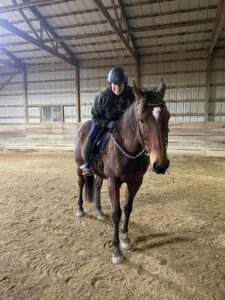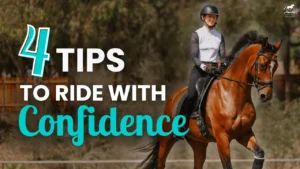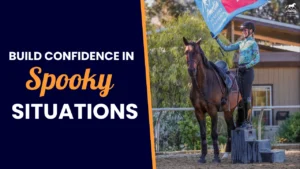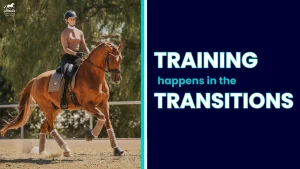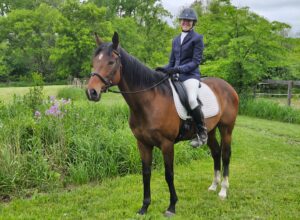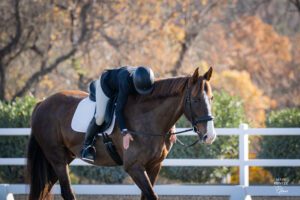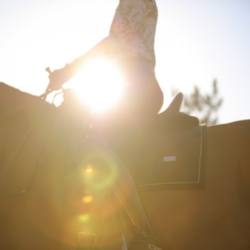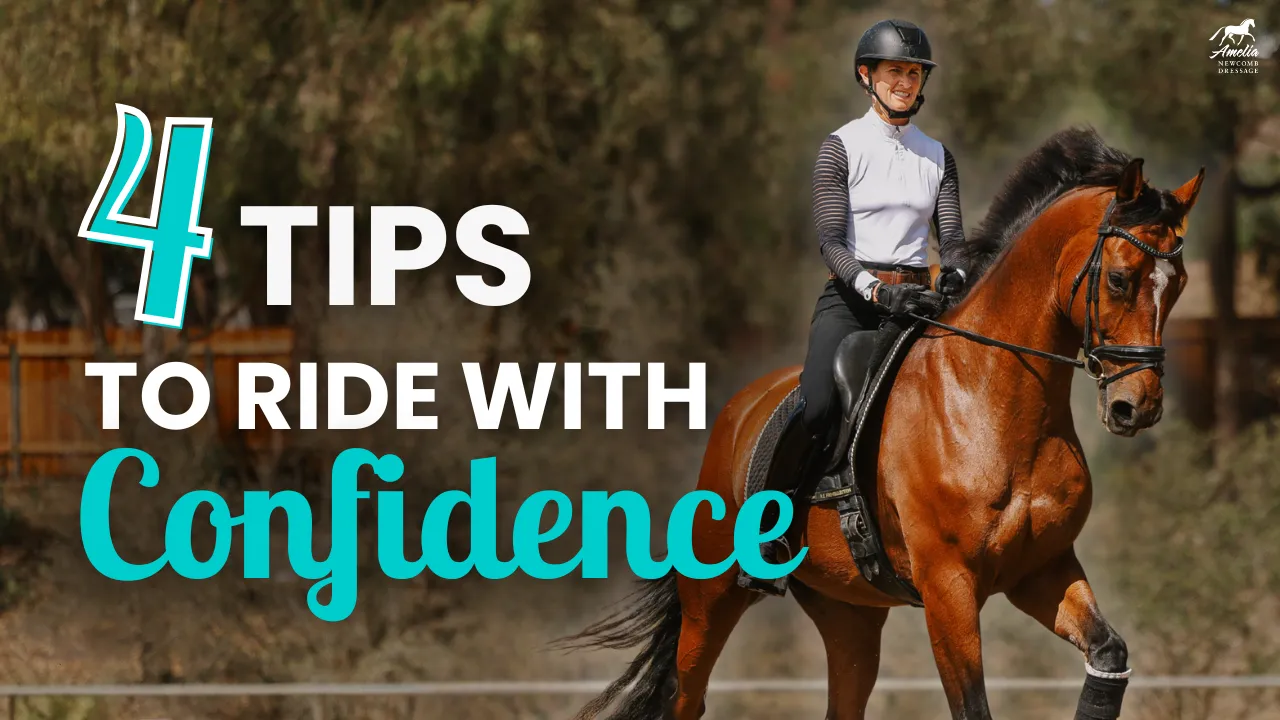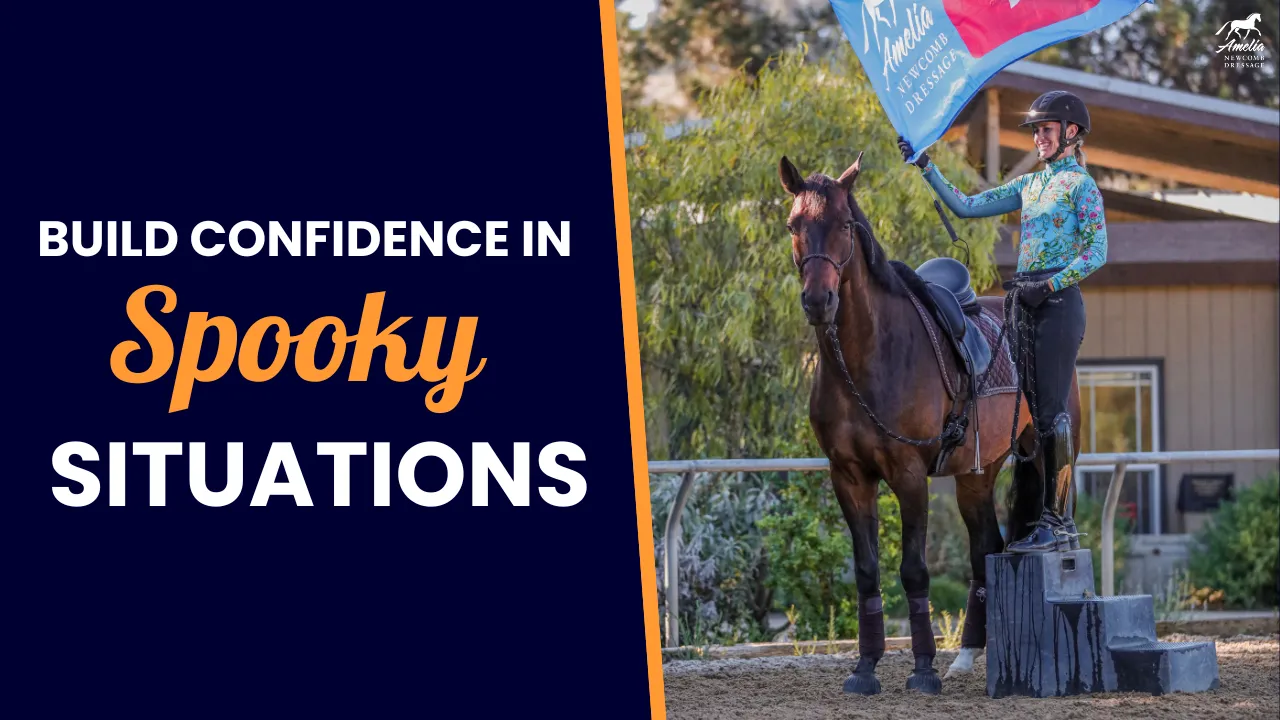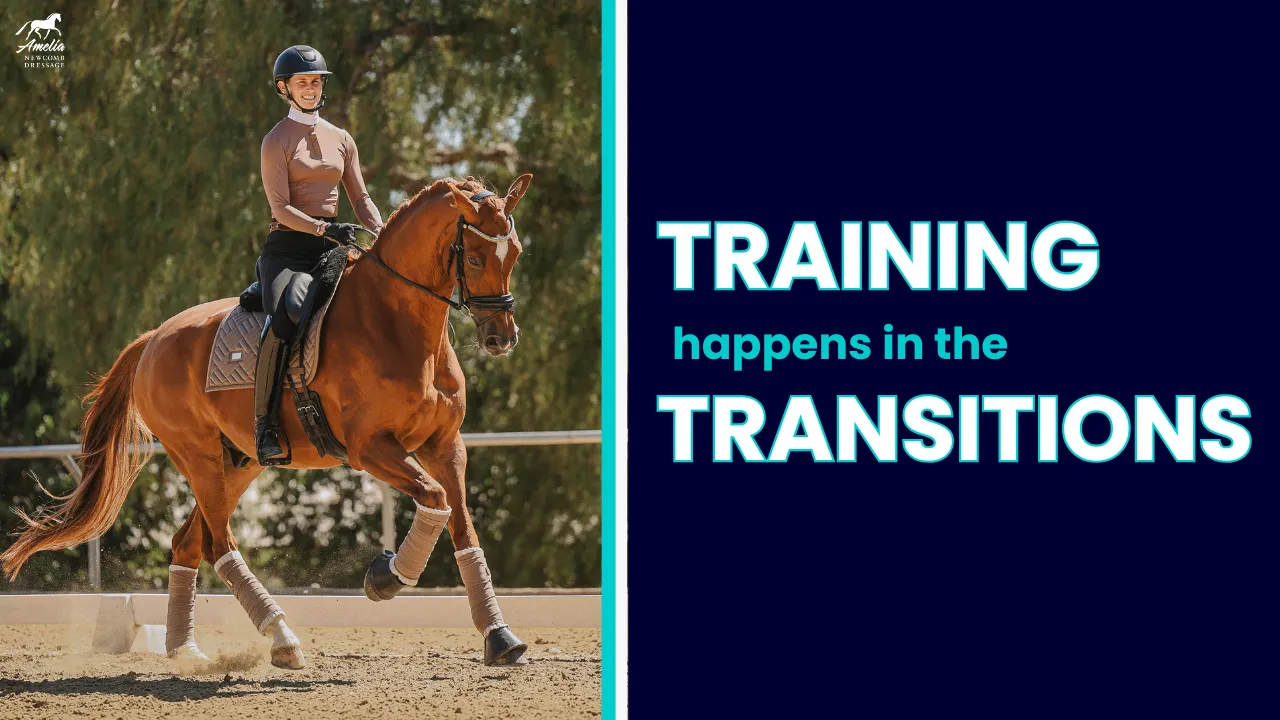Many riders struggle with the canter seat and following the motion of the horses’ back in the canter. I find it helpful to think of circles and ovals to find the correct seat in the canter.
It’s important to understand the mechanics of the canter first. The canter is a 3 beat gait. The footfalls in the canter are as follows:
- Outside hind leg
- Inside hind leg and outside front leg
- Inside front leg
These footfalls create a rocking horse motion in the horses’ back. On beat one (outside hind leg) the horse is moving uphill. On beat 2, the horse is more or less horizontal in balance and on beat 3 the horse is downhill.
Gina, to follow this motion, your hips move in a circle. It is essential that you keep your hips moving in this circular motion or the horse will likely break out of the canter!
Once you’ve mastered this, it’s time to work towards being able to adjust the horse’s canter from your seat! A Grand Prix horse can go from a huge extended canter into a tiny pirouette canter on the spot. The way that the rider moves their hips in the saddle is important for communicating this to the horse.
For a canter lengthening or a medium canter, think of growing the circle into a horizontal oval. By pressing the base of the circle longer across the saddle (and using your legs, the driving aids) you will communicate to your horse to make a longer and more ground covering step.
For the collected canter, think of a vertical oval. In the collected canter, you want shorter, higher steps. So think of the base of the oval getting shorter (less ground cover) but more jump and lift in the strides.
It’s very important that the hips stay moving. If the rider stops moving the hips, the horse will for sure stop cantering! Remember to keep moving your seat when you ride a circle or a half pass!
